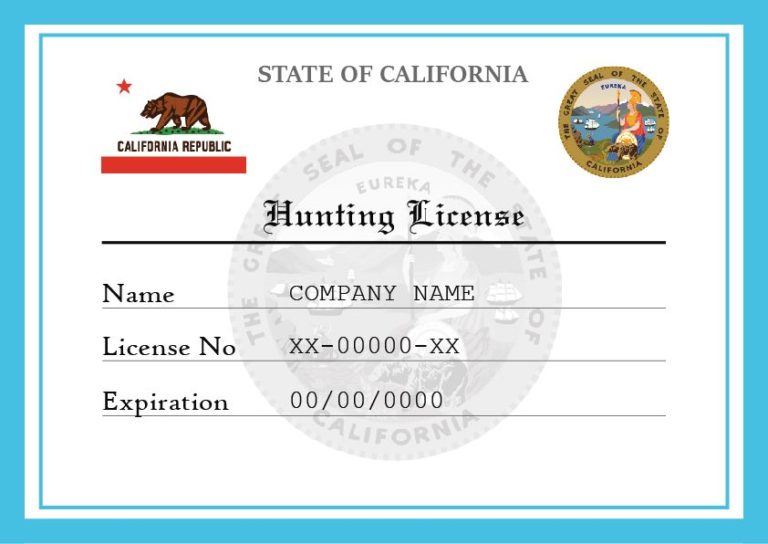A handheld device is something that you would definitely need when you are out hiking.
Finding the right one for yourself may be difficult due to the large industry providing a lot of trackers. We have narrowed down the 7 best GPS trackers for hiking as of 2025 to get you started.
IntroDuction to Garmin

Known for their durability and accuracy, Garmin devices (and most of the other devices we see today) use multi-GNSS support, including GPS, GLONASS, and Galileo, to ensure precise location tracking even in remote areas.
Many models come with preloaded topographic maps, turn-by-turn navigation, and weather updates, making them essential for outdoor enthusiasts and professionals alike. Features like real-time location sharing and SOS emergency functions provide added security, especially in unpredictable environments.
Beyond outdoor adventures, Garmin GPS trackers are also widely used for fleet management and personal safety. Their compact and discreet designs make them ideal for monitoring vehicles, equipment, or even loved ones, with real-time tracking and geofencing alerts.
Many models also sync with the Garmin Explore app, allowing users to plan routes, analyze trips, and stay connected from anywhere. With rugged construction and long battery life, Garmin GPS trackers stand out as a dependable solution for navigation.
How they Work and why you need them

A GPS by itself means Global Positioning System, it is a satellite-based radionavigation system which provides time information and geolocation too.
Garmin GPS trackers work by connecting to multiple global navigation satellite systems (GNSS), including GPS, GLONASS, and Galileo, to provide precise location data. These devices continuously receive signals from satellites, calculating exact positions in real-time.
Advanced models come with built-in sensors like barometric altimeters, accelerometers, and compasses to improve accuracy, even in challenging environments like dense forests or mountainous terrain. Some units also offer LTE connectivity or satellite communication, ensuring you stay connected even in areas without cellular service.
Having a GPS tracker is essential for anyone who values safety, navigation, or asset protection. Outdoor adventurers can rely on these to navigate unfamiliar trails, mark waypoints, and send emergency SOS signals if needed.
You need one of these because it helps you preplan the routes you want to take and trace the route to return back safely. It also allows you to mark potential camp areas, ranger stations or make contact with colleagues who are nearby too.
Terms and Features
Altimeter/barometer

Though all GPS trackers come with an altitude reading based on the satellite data, a tracker that comes with an altimeter and barometer would produce far more accurate elevation readings when you are in the woods or mountains.
Preloaded maps
These are maps that are provided on the GPS when you purchase them, which are base maps. Most devices also accept separately purchased topography maps that are either downloaded or provided on a SD card. You can then manage all the maps you have by simply connecting your device to a computer or laptop.
Radio
With some GPS trackers come a unit-to-unit call feature which allows you to communicate with friends and hikers nearby and also see the location of where they are.
This would be really useful when hiking with a group of friends in the woods without phone connections, a great touch that comes with GPS operated navigations.
Compass type

GPS devices usually come with either a differential compass or an electric compass, both of these are helpful in general but if you are looking to locate your bearings then an electronic compass is a more suitable option.
With one of those, without any movements or whatsoever you will be able to check your bearings which is pretty important for some but not so for others, it is really up to you and your preference.
GPS memory storage
Finding a GPS with an external memory storage may be a good choice as you will be able to add more storage area. With more storage area available as opposed to a fixed one you can save more data into your GPS tracker along with more topography maps, points of interest and also updates.
Durability
Looking for a GPS tracker that looks complex and fancy may be one’s choice but the tracker itself should be able to perform its functions. The tracker should be able to withstand pressure and also be water resistant if not waterproof. Choosing a GPS that can withstand your conditions and not break so easily should be the priority, a GPS that has a good body strength and resistance to harsh conditions is what you go for.
Battery
Also to be considered is the battery life of the GPS, going for a hike would sometimes take long hours or even days for some so looking for a tracker that is able to last is important.
Usually, these GPS trackers come with two power options, those with batteries which you change from time to time or those that you would have to charge when the battery is low.
Both of them have their own advantages and it is up to you to decide, if changing batteries from time to time when out hiking is alright for you then it shouldn’t be a problem.
A tip is that you always reduce the backlight of the device to conserve the battery as much as possible, use lithium batteries as they last longer and is durable and always bring spare batteries on your trips just in case.
Miscellaneous considerations

You should consider the smaller features that come with the trackers, the size of it, the weight, quality of the screen and also the number of maps that are available.
Carrying a lighter and smaller tracker would be easy to use and handled but may not be such for some who prefer larger ones with larger screens.
It is therefore important that you read through the specs the cameras offer when buying as you would never actually know what you want and what you need.
Below is a video about the eTrex series by Garmin which we have also included in our top 7 if you are more of a visual learner because yes, reading can get boring.
7 Best GPS Models from Garmin iN 2025
1. Garmin inReach Explorer+

This product by Garmin is known for its exceptional abilities as a communicator, this means that besides being a tracker this GPS device allows you to text and send messages from anywhere around the world as long as you are connected to a satellite through a subscription.
This device allows you to check weather conditions around you which is really useful for you to plan your trips for hiking activities. Additionally, the tracker can be used to trigger an interactive SOS when in trouble to a 24/7 rescue center, this comes in handy when your hiking activities are particularly dangerous or risky.
It is also small and compact, easy to carry and easy to handle in the woods. One thing worth noting is that the tracker pairs with your mobile phone as long as you get the Earthmate app which is able in the applications app.
On the flip side though – the tracker lacks in providing detailed information that some really need like a barometer, an altimeter or a compass.
If you can manage having a GPS tracker without those features but only want the basics, then that shouldn’t be a problem. Besides, the tracker comes with many features that you don’t find very commonly in other GPS trackers too, balance it out based on your needs.
2. Garmin Foretrex 401 waterproof

This particular unit by Garmin is built for versatility and easy use. It has a clean and clear display which allows you to see all the information you see which is relevant. Because of its extremely small size it has a very light weight and is easy to use and handle.
This also makes it possible for you to put it on your wrist as a wristband which is heavy duty. Going on to the specification, the tracker enables you to track the path you’ve taken so far and also allows you to retrace your steps if you need to.
The unit is able to last 17 hours of use from just a single charge of the lithium-ion battery which is very much good for a device like this.
It also comes with a built-in altimeter and electronic compass allowing you to have full control over the place you go without being afraid of getting lost.
On the downside of it, the GPS would only be able to last long if you turn off some of the features it has or it would drain out the batteries real quick.
Other than that, the tracker is amazing and has an attitude of its own, don’t worry about the price as it is also affordable, Garmin does not disappoint.
3. Garmin 64s Worldwide

This tracker looks impressive by appearance and does wonders within too, it has many topographical maps which covers the entire globe, you will never get lost to say. Interestingly, the tracker has an open access to both the GPS system along with the GLONASS system out of Russia, which is pretty impressive, you get to bring this baby anywhere you go.
It has an amazing reception due to the quad helix antenna solving the problem many faces with GPS navigation systems. Its small size also contributes to the light weight it has, using it in the woods for hiking would be easy and quick.
The GPS also has high quality topographic maps which helps you in navigating through the woods, great ability to find reception in very dense places and has great 2.6 inch screen that is clear and bright for your reading pleasure.
The downside here for this GPS is the battery life, turning it off when not necessary is highly recommended unless you want to stay in the woods all night long. Also, that the user manual that comes with it isn’t as detailed as it should be according to users.
4. Garmin Montana 600t

This is an overall convenient, dependent and compact product by Garmin, it comes with an adaptability to both the GPS system and the GLONASS system which allows you to use this unit practically anywhere in the world.
It also has an interesting software called BaseCamp which allows you to see the display topography pool in either 2D or 3D along with the function of allowing you to download satellite images through the BirdsEye subscription which is in this case included!
With its 3-inch touchscreen you will be able to browse through the device easily and comfortably without any problems. Not forgetting its ability to track the routes and also having a database for the important waypoints out there in the wild.
The GPS unit however has some criticisms to it, the software on the device seems to be tweaked from another app.
Another to add to that is the trackers battery life which is also a little weak given that it is after all a touchscreen.
Garmin trackers come in all shapes and sizes, this would be great for those of you looking for something medium and affordable too.
5. Garmin ETrex 20x

This GPS tracker is designed mainly to cater for those of you who are not particularly looking for a full on guide and complex information to get yourself out of the woods. Meaning to say that it has the basic functions you would require in a GPS.
Therefore, if you are fairly equipped with the knowledge of the locations you usually head out to and need a GPS as a “in case” or emergency purpose then this is for you. But being Garmin, the basics are still very much functional and operational with quality.
It is an efficient and compact tracker that is easy to handle and use in any circumstances. It is also adaptable to both GPS systems and the GLONASS systems which enable you to use this tracker in any part of the world.
There are also additional available maps that you can obtain from the Garmin website.
However, the additional maps mentioned above comes with a cost which is a little annoying for some users. The device is small and easy to use which also means it takes lesser power but unfortunately there is only a single power source from 2 AA batteries, you would have to change the batteries from time to time.
Bringing a spare when you go hiking and using lithium batteries is highly advised.
6. Garmin Oregon 650t

The Oregon tracker is most known for its geotagging ability, turning your photos into information on the maps is more helpful and valued more than anything else. Retracing your steps back to base is made easier with this feature, usual GPS trackers will give you information on coordinates, but the geotagging changes the entire game.
With an 8MP camera that comes with it, the Oregon 650t really is something, it also comes with a fair sized screen which produces clarity that you cant find in other brands. It also comes with an LED flashlight, the tracker really does help you get back to base in more than one way.
It weighs only 7.4 ounces which is pretty light, carrying it around wont be an issue while navigating. Both the GPS and GLONASS systems are supported by this device allowing you to go hiking anywhere without any worries of getting lost.
The back of the tracker has a clip to it which allows you to attach it to a wrist band on your hands or anywhere else convenient for your viewing.
Unfortunately, with so many features gained, some is to be lost, the battery life. As it comes with geotagging and also a flashlight battery consumption is pretty heavy, being a wise user is essential when using one of these trackers.
Bringing spare batteries wont hunt in case you start running out while hiking in the woods or mountains.
7. Garmin eTrex 10

With the ability of locking onto 18 satellites, this tracker us definitely one for those seeking security while hiking. It has a sensitive receiver with GLONASS and HotFix which enables super-fast positioning.
It has a fairly large and bright color screen display which will help when the surroundings are bright while walking through the woods. Even without any backlight you would still be able to see the information to those worrying, which also helps in conserving the battery life.
It only requires 2 AA batteries which is pretty standard in the industry. The battery can last up to 20 hours with a new change of batteries which is very impressive. With the backlight turned completely off, you can keep the tracker on for up to 25 hours without any problem.
It also comes with a waterproof design of up to IPX7 which makes it both long-lasting and durable. Not to mention the accuracy of the tracker of up to 7 feet, no worries on how accurate it is, Garmin got you covered.
Unfortunately, the device does not come with the fancy and complex features some may be expecting, it is an easy-to-use basic GPS tracker but does so with perfection.
Suitable for those looking for something simple without having to read the instruction manual to be able to use it on the first day.
Conclusion
All the mentioned GPS trackers above come with their very own specialities and features. Choosing the right one for you may not be that hard in this instance as the brand itself, Garmin is rest assured a great GPS company.
The guidelines stated would be a great help for you when going through the top 7 that we have stated so far.
Obviously, these trackers don’t come with all the features you would want in one, all of them come in different shapes and sizes, choosing the ideal one would take time and some thought.
The entire article you’ve read so far comes with all the essentials you need to know and the best you can find in the market by Garmin, it is now your choice, choose wisely and consider all the key features you are looking for. Good Luck!
Also, come read our recent article, 10 Best Action Cameras to Invest In 2025: Full Guide and Review which would be a good addition for your hiking trips too.
Till next time.






